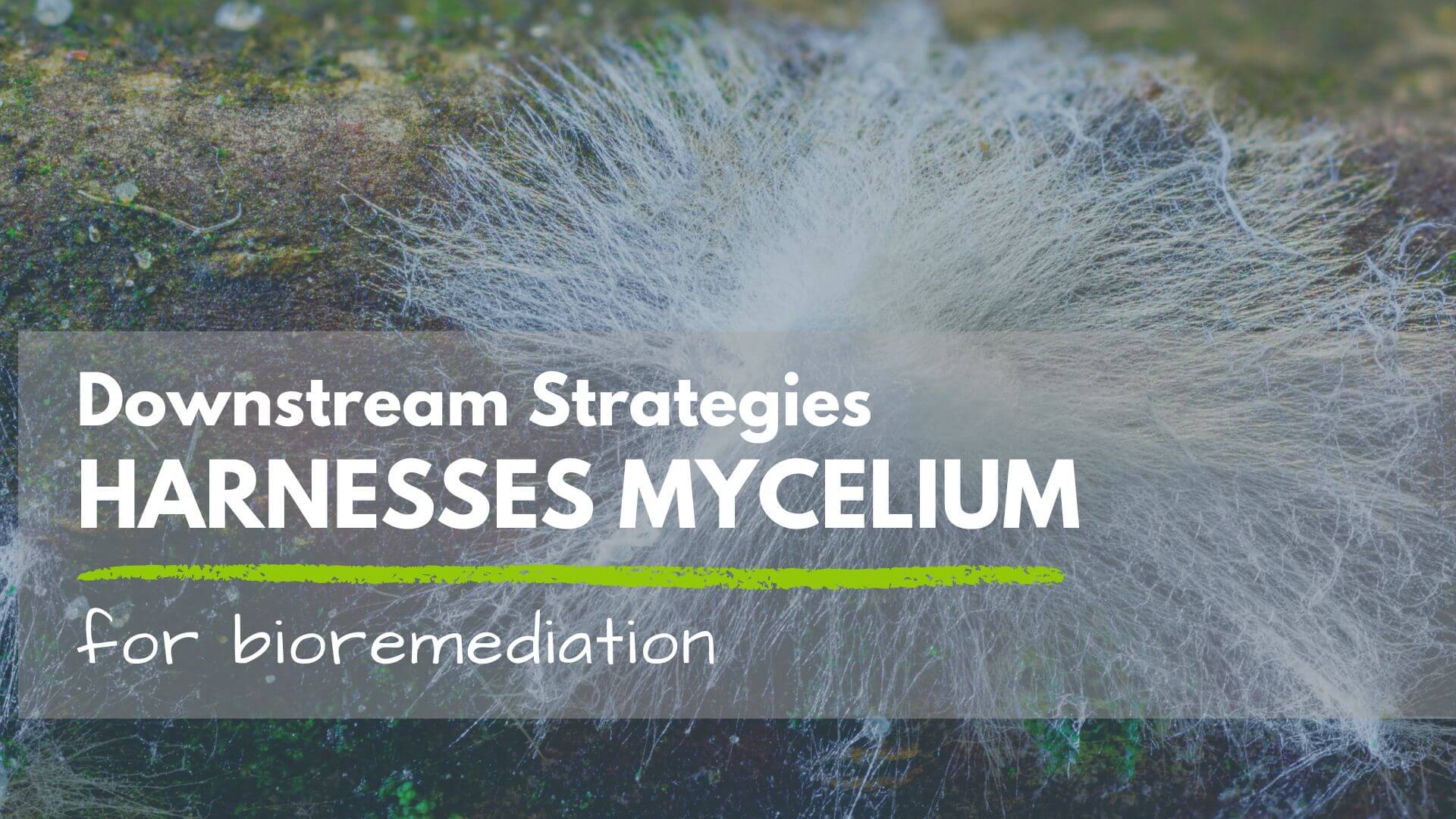Downstream Strategies collaborated on an innovative stormwater design-build project at the Berkley Springs Train Depot in the Town of Bath, West Virginia. The stormwater feature combined Chesapeake Bay best management practices with the installation of hügelkultur berms, a centuries-old agricultural method that facilitates the bioremediation process using mycelium.
Mycelium, the underground network of thread-like cells produced by fungi, has re-emerged as a beneficial tool in bioremediation, the process of using organisms to remove or neutralize pollutants from the environment. This article aims to explore the potential of mycelium in bioremediation and its applications in different environmental settings.
What is Mycelium?
Mycelium is the vegetative part of fungi, consisting of a mass of branching threads, that predominantly grows under the ground surface. It plays a vital role in the decomposition of organic matter and the recycling of nutrients in ecosystems. Mycelium is known for its resilience and adaptability, making it an excellent candidate for various environmental applications.
Why is Mycelium used in bioremediation?
The unique properties of mycelium make it an ideal candidate for bioremediation. Some of the reasons include:
Versatility: Mycelium can adapt to different environmental conditions, including temperature, pH, and nutrient availability.
Absorptive capacity: Mycelium has a high surface area-to-volume ratio, enabling it to absorb and trap pollutants effectively.
Enzyme production: Mycelium produces enzymes that can break down complex organic compounds into simpler forms, facilitating their degradation.
Natural properties: Unlike some chemical methods of remediation, mycelium-based bioremediation is non-toxic and environmentally friendly.
How can Mycelium be applied in bioremediation?
Mycelium can be used to remove heavy metals, pesticides, and hydrocarbons from contaminated soil. The mycelium absorbs the pollutants and breaks them down into harmless compounds, improving soil quality and fertility. It can also be used to filter and purify water contaminated with pollutants such as heavy metals, pathogens, and organic compounds. The mycelium acts as a natural filter, trapping the pollutants and removing them from the water. Mycelium can even be used to help purify the air of volatile organic compounds (VOCs) and particulate matter by absorbing pollutants and breaking them down into harmless compounds.
For more information about this project or Downstream Strategies’ experience in Green Infrastructure, reach out to our Green Infrastructure team leader, Matt Pennington at 304-292-2450 or mpennington@downstreamstrategies.com.

